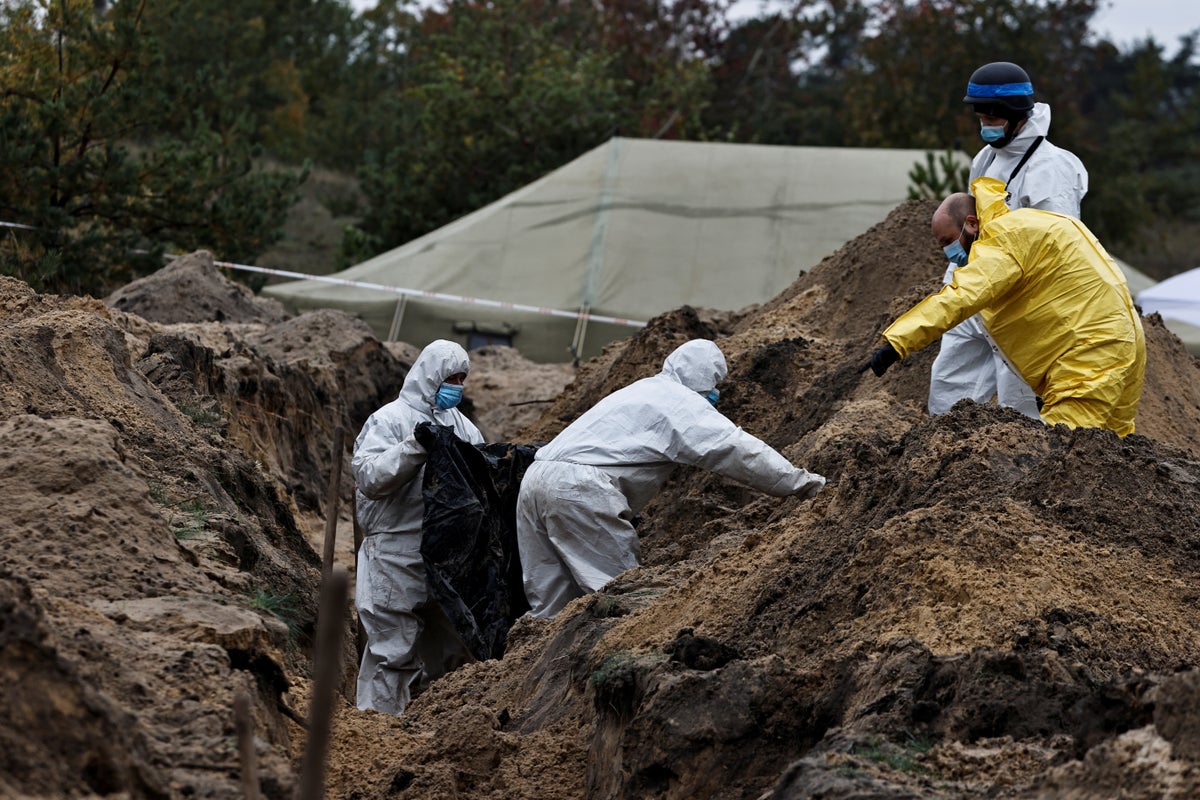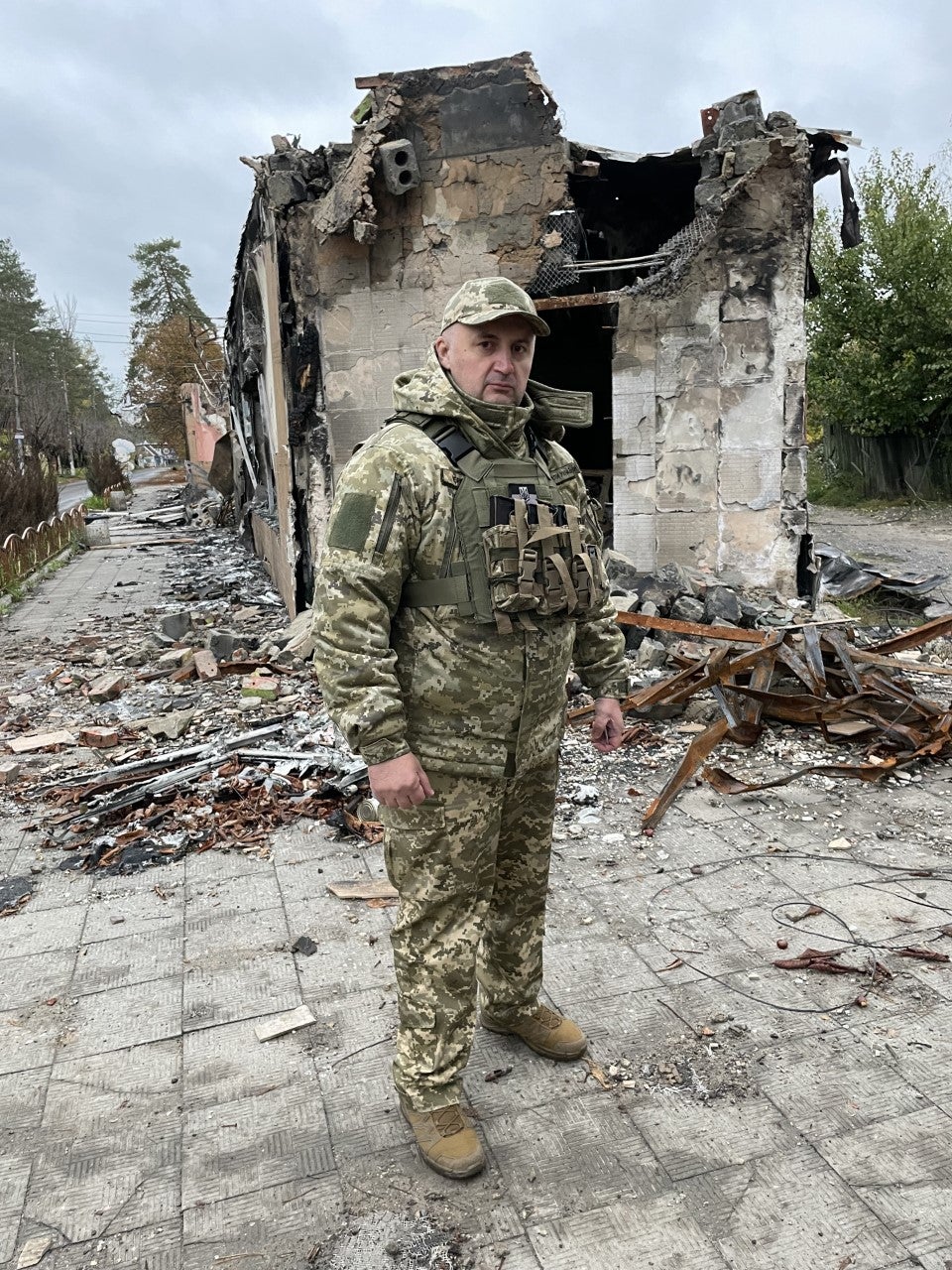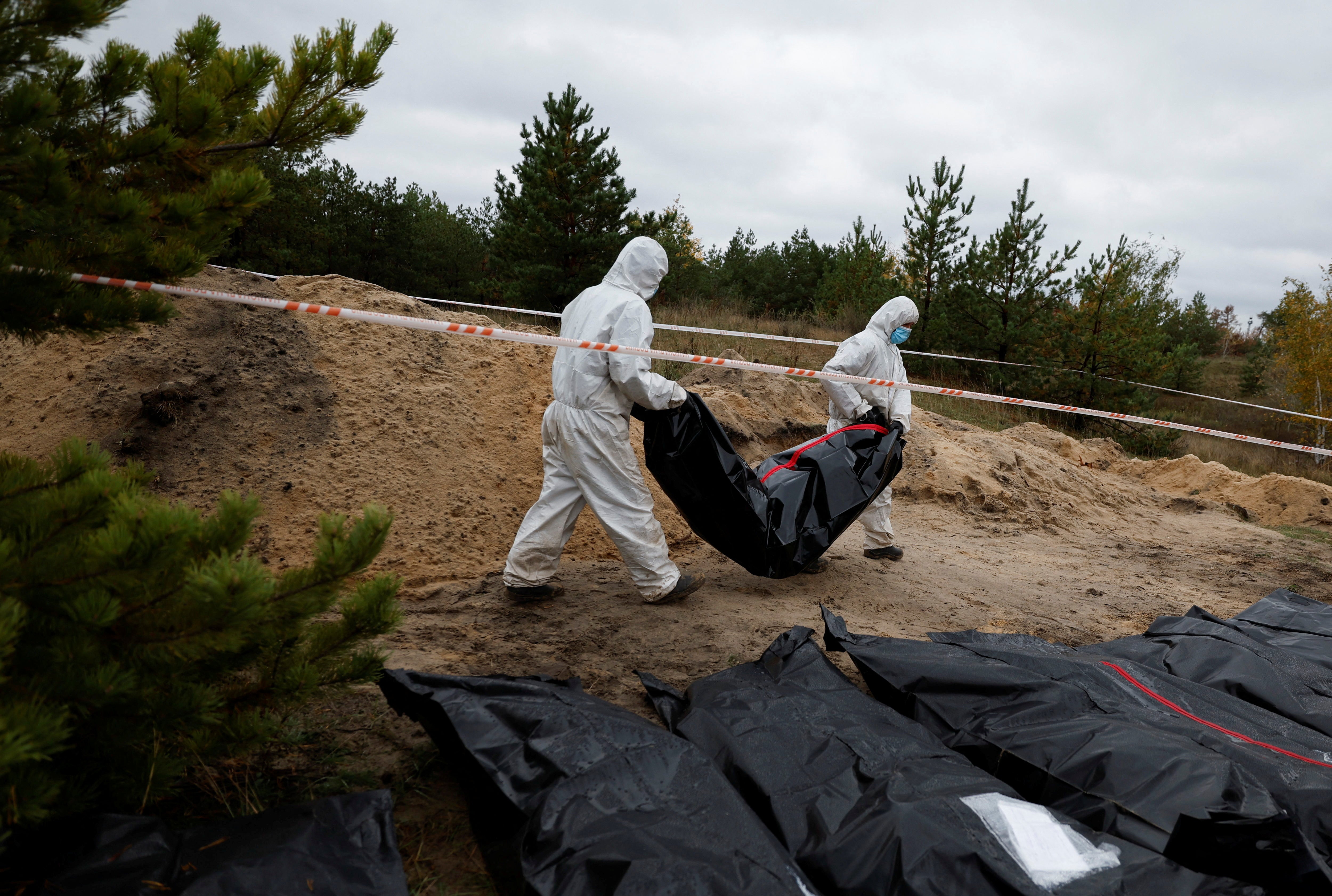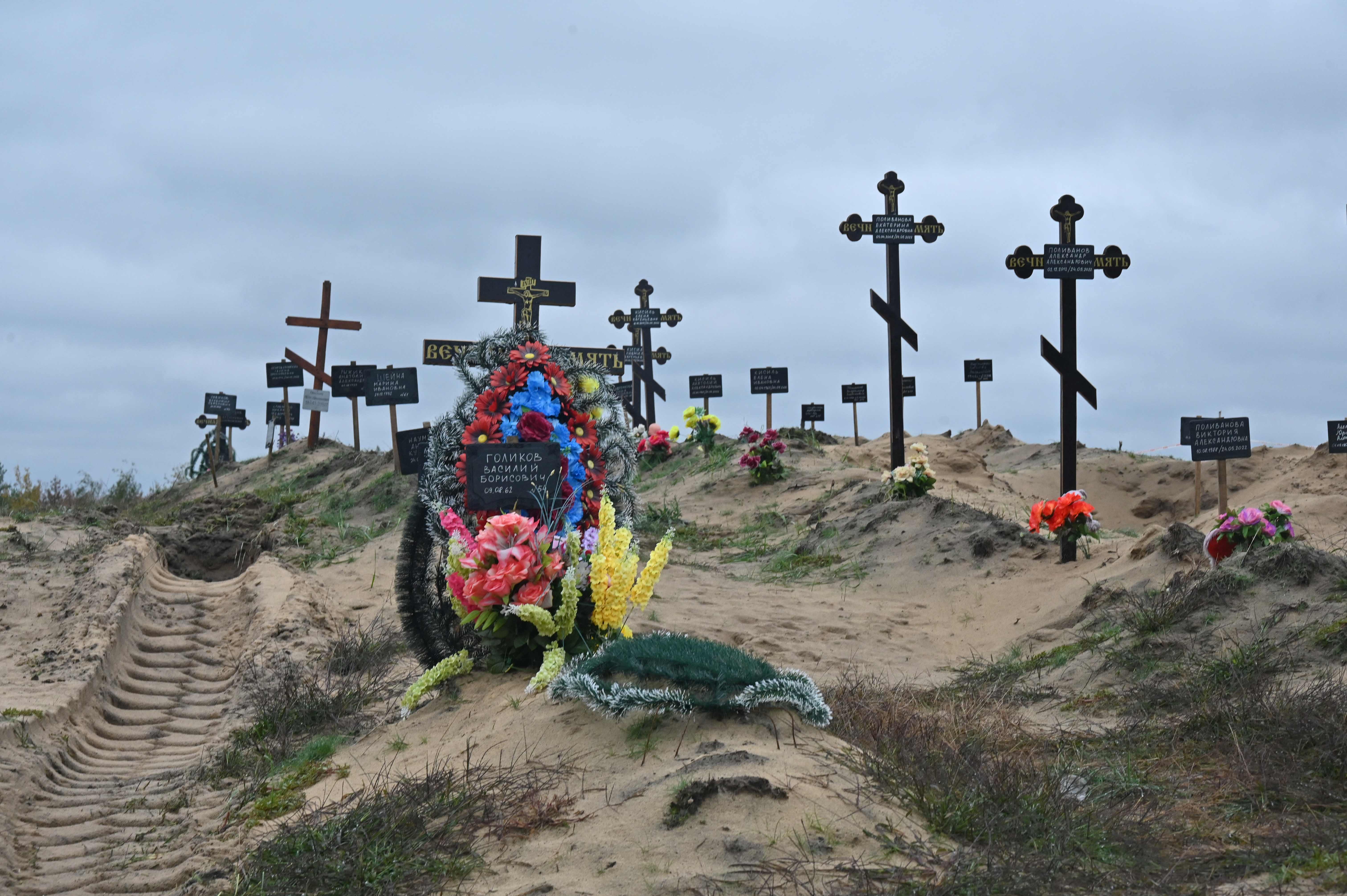
Mounds of brown earth slide into the rows of graves on a day of cold rain and whipping winds as forensic investigators exhume bodies on a hillside to the sound of shellfire in the valleys beyond.
Two separate mass burial sites, for civilians and soldiers, have been found on the edge of the cemetery in this town, recently liberated from Russian forces. Some of the 78 remains recovered so far have signs of having met a violent end. There are body parts, gunshot and shrapnel wounds, smashed ribs and skulls, severe cuts. Some of the dead are very young; one is a year-old baby girl buried with her parents.
Among the corpses taken out and zipped into black body bags are Ukrainian soldiers in torn and frayed combat uniforms. Some have signs of having been handcuffed and blindfolded and have bullet holes in their heads, according to officials.
Ukrainian authorities say they expect to find around 200 bodies at this burial site – one of several discovered in areas that had been occupied. The bodies of 534 civilians have been found in the area around Kharkiv alone. Serhii Bolnivov, the chief investigator of the region, has claimed that “torture chambers” have been found in “almost all large towns and cities where the Russian military units were based”.
Standing beside the graves here in Lyman, Pavlo Kyrylenko, head of civil and military administration in the eastern Donetsk region, says there are visible signs of torture. “Some of the soldiers have tapes on their hands and over their eyes. There are trauma injuries to many of the other bodies,” he says.
“But all the cases will need to be investigated thoroughly before we can establish the cause of death. We know of places where people were taken and abused. These are scenes of crime from where we’ll recover evidence which will be forwarded to the office of the prosecutor. We want to ensure everything is done properly if trials take place here or abroad.”

Huge parts of Lyman have been destroyed in the fighting during months of Russian occupation, and it is unclear how many of the deaths were the result of deliberate killings and torture or due to missile and artillery strikes – or even natural causes in a town where there has been no power and water, and threadbare medical services. Some elderly and sick have been found to have starved to death, officials say.
Local residents tell of summary executions. “I know of a father and son who were taken away for questioning,” says Nicolai Yurchenko, a 59-year-old former carpenter. “There were arguments and the old man was shot. The son tried to save his dad, and he was killed as well. We don’t know what happened to their bodies.”
In the neighbouring town of Sviatohirsk, locals describe how trigger-happy fighters from the separatist DNR and LNR (pro-Russian self-declared Donetsk and Luhansk “Republics”) would open fire at the slightest provocations, or, at times, because they were scared.
Svetlana, 38, says she ensured her children stayed indoors after curfew with frequent outbreaks of gunfire at night. “There were men from DNR who wore ordinary clothes but carried guns. I don’t think they were trained properly and would often shoot for no reason. People were hurt.”

Another resident, Yulia Zhurbar, claims a young man was shot by the Russians after being detained in the first week of June.
Bohdan, who was detained by the Russians for three days, says that although prisoners were forced to dig graves and dump bodies, he does not know how people were killed. “They may have died in the bombings, there were lots of bodies in the streets and buildings which were cleared for weeks”, he says. “I cannot say I saw anyone being [deliberately] killed. But the fact is that people died who would have lived if the Russians had not invaded our country.”
Recapturing Lyman, a key military stronghold and transport hub, was a strategic as well as symbolic victory for Ukraine, and a huge blow to Russian president Vladimir Putin’s aim of “reunifying Donbas” by taking the Ukrainian-held part of the region.

It has relieved pressure on the two main cities of the region, Kramatorsk and Slovyansk, and significantly strengthened the prospect of an advance into separatist Donetsk and Luhansk. Attacks on them, however, would mean further crossing of Putin’s “red line”, for which he has threatened dire consequences.
“These threats are just matters of jokes for us now, [Putin] cannot frighten us, we will continue what we have to do and take back our land,” says Colonel Serhiy Cherevaty, a spokesperson for the Ukrainian army’s eastern command. “We have momentum now we need to maintain. Where do we go next? Let’s keep the Russians guessing.
“Of course, we find atrocities in the area we have liberated. We all hope that those who did this will face justice in courts. In the meantime, the Ukrainian military is administering our own justice on some of those responsible – by killing them.”







